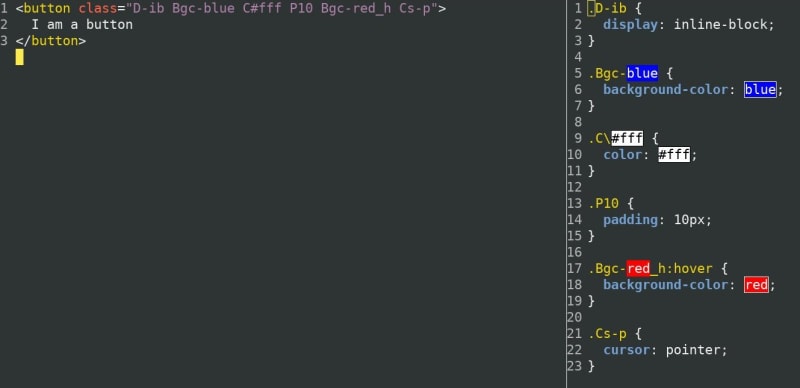Problem Statement:
There are n kids with candies. You are given an integer array candies, where each candies[i] represents the number of candies the i-th kid has, and an integer extraCandies, denoting the number of extra candies that you have.
Return a boolean array result of length n, where result[i] is true if, after giving the i-th kid all the extraCandies, they will have the greatest number of candies among all the kids, or false otherwise.
Note that multiple kids can have the greatest number of candies.
Example 1:
Input: candies = [2,3,5,1,3], extraCandies = 3
Output: [true,true,true,false,true]
Explanation:
Kid 1: 2 + 3 = 5 candies, which is the greatest among the kids.
Kid 2: 3 + 3 = 6 candies, which is the greatest among the kids.
Kid 3: 5 + 3 = 8 candies, which is the greatest among the kids.
Kid 4: 1 + 3 = 4 candies, which is not the greatest among the kids.
Kid 5: 3 + 3 = 6 candies, which is the greatest among the kids.
Example 2:
Input: candies = [4,2,1,1,2], extraCandies = 1
Output: [true,false,false,false,false]
Explanation:
Kid 1 will always have the greatest number of candies, even if a different kid is given the extra candy.
Example 3:
Input: candies = [12,1,12], extraCandies = 10
Output: [true,false,true]
Constraints:
n == candies.length
2 <= n <= 100
1 <= candies[i] <= 100
1 <= extraCandies <= 50
Initial Thought Process:
The basic approach is to:
Find the maximum number of candies that any kid currently has.
Iterate through each kid, and check if giving them all the extraCandies makes their total candies greater than or equal to the current maximum number of candies.
Return a boolean array where each element indicates whether that kid can have the greatest number of candies.
Basic Solution:
Code:
let maxCandies = Math.max(…candies);
let result: boolean[] = [];
for (let i = 0; i < candies.length; i++) {
if (candies[i] + extraCandies >= maxCandies) {
result.push(true);
} else {
result.push(false);
}
}
return result;
}
Time Complexity Analysis:
Time Complexity: O(n), where n is the number of kids. Finding the maximum candies takes O(n), and iterating through the candies array also takes O(n).
Space Complexity: O(n), for the result array of boolean values.
Limitations:
This solution is efficient given the constraints. It works within the allowed time and space complexities.
Optimized Solution:
The basic solution is already optimal in terms of time complexity. However, we can focus on making the code more concise and clean.
Code:
const maxCandies = Math.max(…candies);
return candies.map(candy => candy + extraCandies >= maxCandies);
}
Time Complexity Analysis:
Time Complexity: O(n), where n is the number of kids. Finding the maximum candies takes O(n), and mapping through the candies array also takes O(n).
Space Complexity: O(n), for the result array of boolean values.
Improvements Over Basic Solution:
The optimized solution uses Array.prototype.map, which makes the code more concise and readable.
Edge Cases and Testing:
Edge Cases:
candies array has minimum and maximum values.
extraCandies is equal to the number of candies the kid with the most candies has.
extraCandies is much smaller than the number of candies the kid with the most candies has.
Test Cases:
console.log(kidsWithCandiesBasic([4,2,1,1,2], 1)); // [true, false, false, false, false]
console.log(kidsWithCandiesBasic([12,1,12], 10)); // [true, false, true]
console.log(kidsWithCandiesOptimized([2,3,5,1,3], 3)); // [true, true, true, false, true]
console.log(kidsWithCandiesOptimized([4,2,1,1,2], 1)); // [true, false, false, false, false]
console.log(kidsWithCandiesOptimized([12,1,12], 10)); // [true, false, true]
General Problem-Solving Strategies:
Understand the Problem: Carefully read the problem statement and constraints to understand what is required.
Identify Key Operations: Determine the key operations needed, such as finding the maximum value and iterating through the array.
Optimize for Readability: Use built-in functions like Math.max and Array.prototype.map to make the code concise and readable.
Test Thoroughly: Test the solution with various cases, including edge cases, to ensure correctness.
Identifying Similar Problems:
Finding the Maximum Element:
Problems where you need to determine the maximum element in an array.
Example: Finding the maximum score in a game leaderboard.
Conditional Array Mapping:
Problems where you need to create a new array based on a condition applied to each element of the original array.
Example: Creating an array of booleans indicating whether students passed based on their scores.
Comparison with Extra Values:
Problems where you need to compare elements of an array with an additional value to determine a condition.
Example: Checking if adding a bonus to employees’ scores makes them eligible for a reward.
Conclusion:
The problem of determining if kids can have the greatest number of candies after adding extra candies can be efficiently solved using a straightforward approach.
Understanding the problem and breaking it down into manageable parts is crucial.
Using built-in functions can make the code more concise and readable.
Testing with various edge cases ensures robustness.
Recognizing patterns in problems can help apply similar solutions to other challenges.
By practicing such problems and strategies, you can improve your problem-solving skills and be better prepared for various coding challenges.













